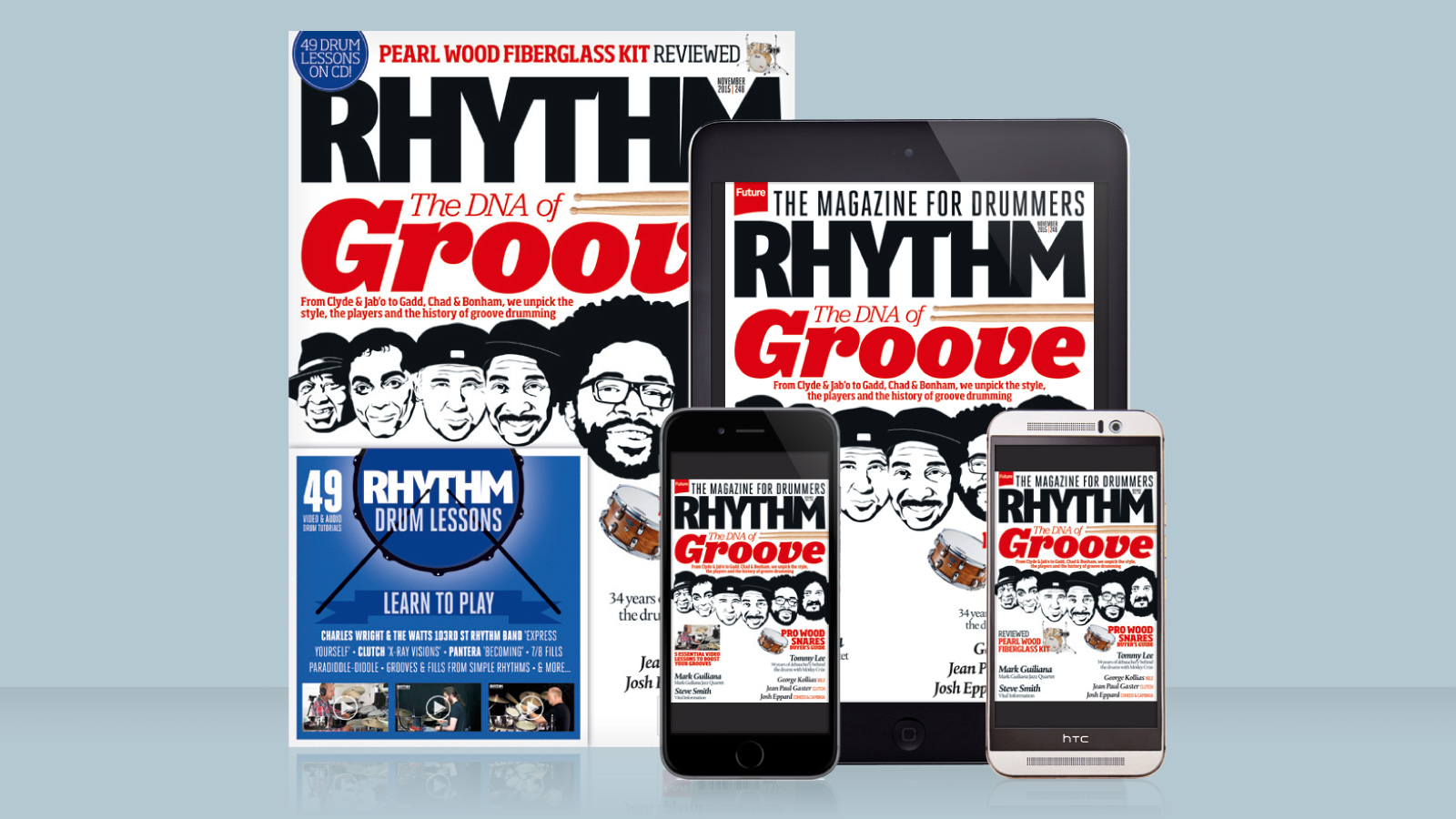Jean Paul Gaster's Guide To Groove
The Clutch drummer breaks down what groove means to him
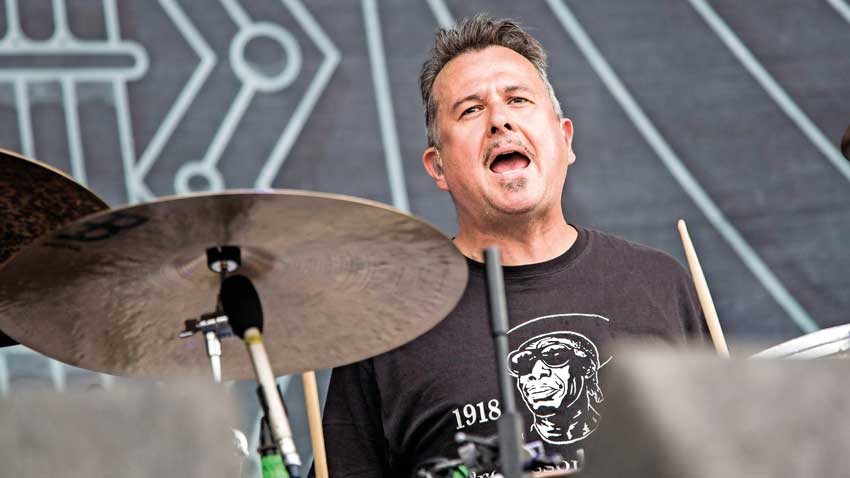
Jean Paul Gaster
There’s a lot to love about Clutch, the Maryland USA groove rockers, from frontman Fallon’s unhinged but brilliant lyrics to the blues-based guitar licks that worm right into your cranium… but underneath it all is drummer Jean Paul Gaster’s deep sense of groove which was formed in no small part by the beats he heard as a youngster in Maryland – specifically the local style of funk known as Go-Go. Here JP tells us what groove means to him, and how he keeps Clutch’s songs grooving so hard.
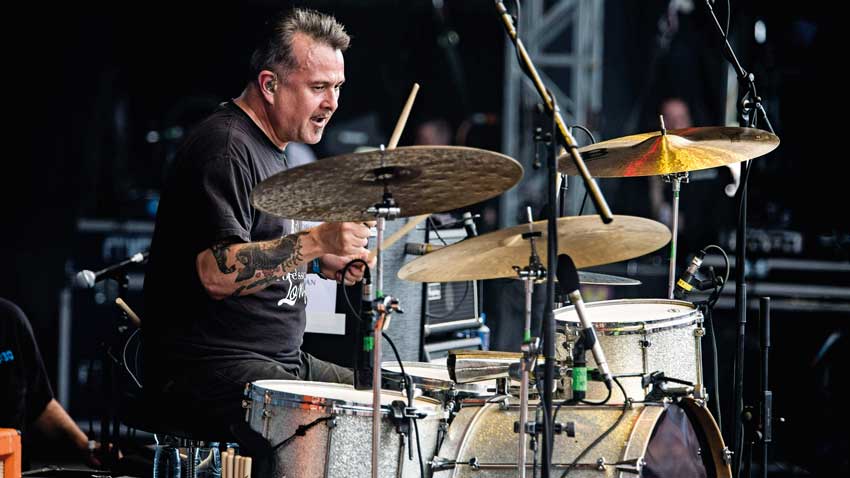
Leaving space in the grooves…
“I’ve spent a lot of time thinking about the hi-hat and how it can be part of that groove. There are so many colours available to you there and it’s not just a bashing thing. For me it’s really where time comes from. I think also the tendency for a lot of the double bass players is to fill in; because you have two bass drums, automatically you want to put in more and more notes and that really takes away from the groove.
"For me, so much of groove is what you don’t play, it’s the space in between the notes and how you space those notes. If you’re playing a lot of stuff, it’s going to be harder to put that groove across unless you’re going to be using a lot of dynamics which is another part of the groove thing. I think it’s important to leave that space in there, leave that room for the groove to breathe and let the other guys in the band have some space to work in as well.”
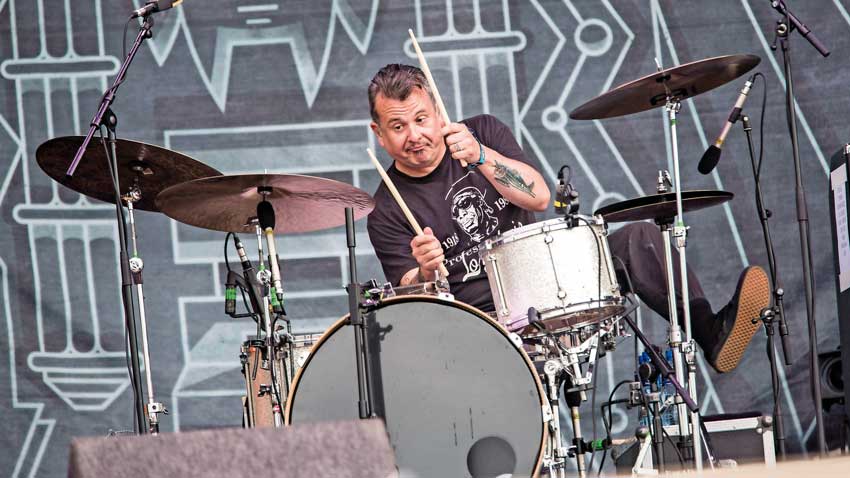
Building dynamics…
“I think it is important to get as many different sounds out of the drums as you can. When you have a bass drum that’s wide open – I tend to play my drum with little or no muffling at all in it – there are two sounds that are available right away that come to the top of my head. You can hit the drum and let the beater come back off the drum to let that drum resonate – that’s going to create a long tone. That’s one particular sound, and then on the other end of the spectrum is something more akin to what the Go-Go drummers were doing and that is to kick the beater and mash it into the head. You get a much more staccato sound, a completely different colour. You can use that technique to varying degrees as far as dynamics go.
"The same holds true for the snare drum, the tom-toms and certainly the cymbals. The best grooves to me are ones that are played on a few instruments but the drummer utilises that idea of dynamics, so that might mean maybe pushing a little harder on the quarter-note on the hi-hats, or maybe pushing a little harder on the upbeats on the hi-hats, that can create a completely different kind of feeling.
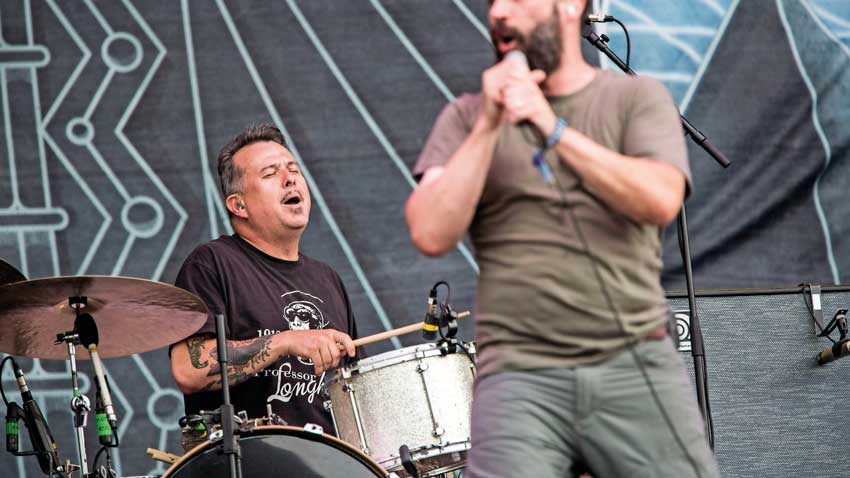
Taking time with your metals…
“Cymbals are another thing that I take a lot of time with. I like to play big cymbals that allow me to get a lot of different colours out of them. I don’t really have a whole lot of use for a 16" crash, for example. For me that cymbal does one thing. I’m sure it would be great for a lot of musical settings but for me I try to get a lot of sounds out of the cymbals, so I like to go for bigger cymbals so that I can play very lightly and get a soft sound, I like to have a bell that I can really articulate on, that tone is very important to me. That way you can get a lot of colours out of the cymbals and that can also help to push the groove.”
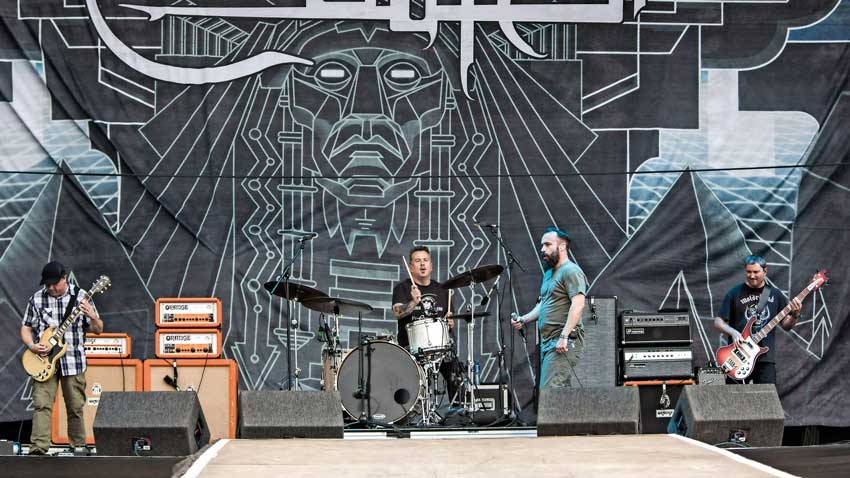
Putting the swing into rock…
“There is a great deal of swing element in what we do and there is also a great deal of straight-ahead rock, so you can play the same beat but depending on how you swing it you can really change the feeling, the way that beat is going to sit in with the rest of the band. You can manipulate that.
"You can play more straight in a particular passage and maybe that means the guys in your band will follow you, or maybe it means that those guys are playing something very straight and I will do the opposite, I’ll try to really swing a particular section and that can create an interesting tension within the band. It’s one of those things that once you become aware of it, you can really use it as a tool and depending on the musical situation you can swing more or less. It’s all about that subdivision, what happens in between those quarter notes, that’swhere the excitement happens.”
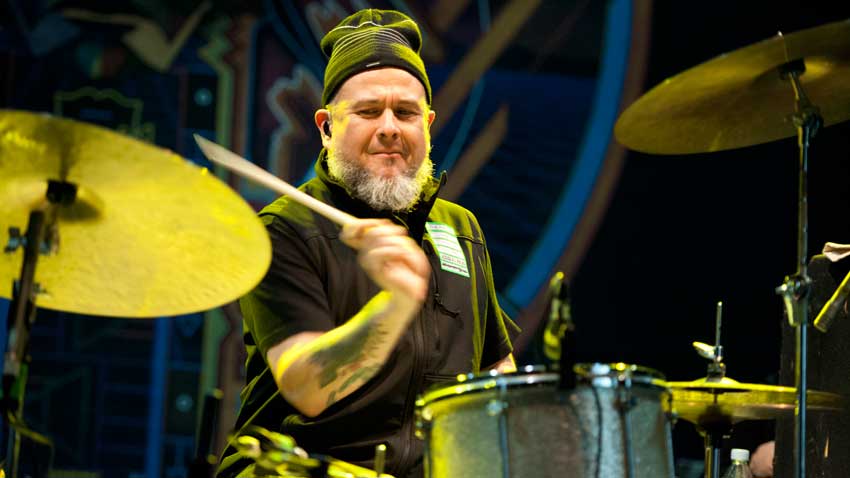
Filling while keeping the groove
“What I try to avoid when I’m doing fills is just injecting something that’s a bunch of notes just for the sake of injecting something that’s a bunch of notes. That’s not to say that a fill can’t be busy because sometimes it can be and you can still maintain that pulse. For me the idea is to never drop that beat. You’ve got to feel that pulse through the entire thing and so because of that, fills are an after-thought and it’s something I don’t really calculate that much.
"The energy of the song, the intensity of the crowd, the room, all that stuff factors in to how I’m going to play that song that night. There aren’t really any set fills that happen that are really a part of the song; that stuff seems to be pretty fluid for me. I’ve tried to do things like that in the past, I’ve tried to orchestrate stuff in a very particular way but as soon as you get up there on stage and the band cranks up, all those preconceived notions immediately go out the window and you’re there just playing the tune.”
